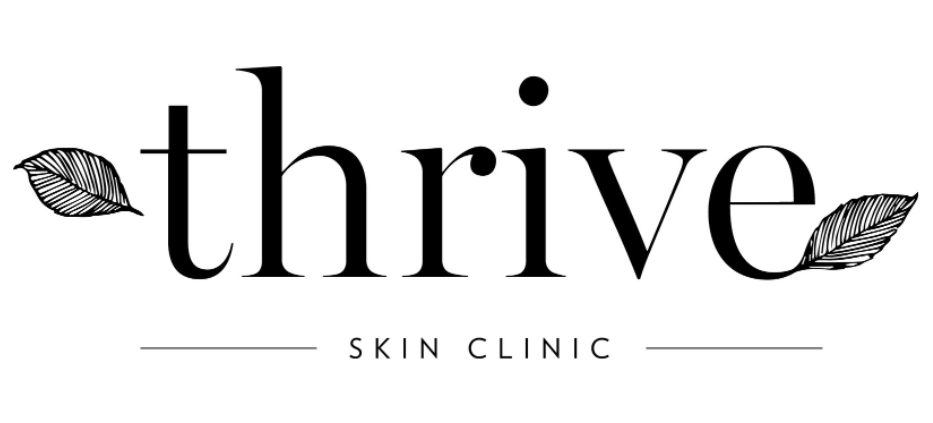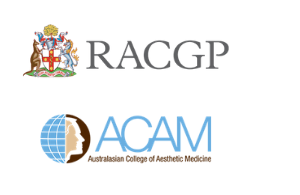Understanding Rosacea
/If you suffer from rosacea, you’ll know it is a chronic condition with multiple triggers. For many, it can feel overwhelming and almost impossible to manage. Rosacea is characterised by issues such as sensitive skin, red skin, dilated capillaries, and itchiness.
I am seeing more people every week with rosacea and I really try to reinforce that we are a team! I can give you advice and work my laser to zap your vessels, but at the end of the day, there is still no cure. However, there are many things you can do every day to help manage your redness - which is why I’ve written my Top 5 #ThriveSurvival tips to managing rosacea:
Reduce or stop the consumption of alcohol and inflammatory foods
With this change alone, I’ve seen AMAZING improvements. Red wine is the WORST, as it contains high levels of natural salicylates. (Try vodka or gin next time!). Inflammatory foods include sugar, spicy foods, and some fruit and veg. The Food Intolerance Network is one of my favourite places to read about evidence-based approaches linking unusual/recalcitrant physical symptoms and food/additives diet - Check out their symptom factsheet here.
Reduce heat on the skin
Intense workouts and hot showers are DEFINITELY going to make your rosacea worse, as heat causes vasodilation, causing your blood vessels to get bigger. Instead, try less strenuous forms of physical activity like swimming, walking or yoga - but not hot yoga! And a short lukewarm shower is best, with a burst of cold water on the face at the end. This is especially important while you are having IPL/NdYag laser treatment for rosacea. You’re investing your time and budget on treatment, so make sure you get the best outcomes you can!
Improve your skin barrier
Red skin needs moisturiser! Nourish your skin with a good moisturiser - you need something with low fragrance and minimal additives. My favourites are Dermacalm (formulated to decrease redness) and Hydrolock, with a regular Masquerase treatment 2-3 times a week. I really swear by Masquerase - it contains Vitamin B, manuka honey and willowbark which naturally reduce inflammation and calm red, itchy skin. Absolutely NO rubbing/scrubbing the skin with abrasives and exfoliants. Immediately STOP all harsh peels, acids and AHA treatments. Your skin needs a gentle pat with tepid water and nourishment… not chemicals!
Use a high-quality sunscreen
Many patients find their redness improves when they stop their usual chemical-based sunscreen/foundation and switch to UberZinc and Synergie mineral makeup. These products act as a physical sun barrier and block UVA and UVB light via titanium dioxide and 21% zinc oxide. They also soothe skin, with no nasty added chemicals.
Never use any suncream that is out of date – even “normal” type skin can get florid contact dermatitis (red itchy skin) in this setting. Review other chemicals you regularly put on or near your face and neck - especially if they are fragrant, as the “smelly” chemicals are commonly linked to inflammation. This includes hair, skin, deodorant, aftershave or perfume. My advice is to STOP them immediately and assess the response for a few months (this includes Oil of Olay ladies!). If you bleach your hair, talk to your hairdresser about using a more natural product, and stop using harsh chemical shampoos/toners - again a common trigger for rosacea (I noticed this with my skin!).
Consider your general health
Many women (and men) with rosacea have estrogen dominance. This is linked with other health conditions such as difficulty losing weight, a higher risk of breast and uterine cancer and liver dysfunction. Visit your GP for a checkup if this concerns you. If you are female and over 40 have a breast check and talk about having a mammogram. Simple slow changes work best - consider adding the Vita-Sol Purity Wholefood powder to a green smoothie each day and reduce your alcohol consumption to only 3 days a week.
A few helpful solutions at Thrive!
I’m constantly reading about rosacea and staying up to date with the latest advances in research and treatment ideas. Rosacea and skin redness is not a single entity, we are all unique and different things will work for different people:
Here are a few interesting things I have learned in the past year and that I have added to my practice:
Low-level Light Therapy
Low-Level Light Therapy at 830nm is an effective, standalone, medical treatment for rosacea. The treatment phase is 2 treatments a week for 8 weeks, 2-3 days apart, then a maintenance phase consisting of weekly treatments. Repeat this cycle every 3 months, or as needed.
I was so impressed by these results that I have just purchased a Healite II, a medical light therapy device, which emits this specific wavelength (830nm). I am now seeing so many clients with rosacea that I thought it imperative for Thrive to offer this treatment alternative. It is safe, inexpensive and effective! When combined with lifestyle changes and simple home care such as the Synergie Anti-Redness Kit, I have seen rosacea improve dramatically.
Topical agents to reduce flushing
One of the hallmarks of rosacea is flushing with exercise and alcohol. It’s socially embarrassing for some e.g. when you are at the gym and people ask if you are OK and do you need a doctor (especially when you are one!).
Brimonidine is a prescription-only topical cream that I offer my patients who are concerned about trigger induced flushing (which can be from rosacea but also directly related to an inability to metabolise alcohol). It reduces the dilatation of the blood vessels (temporarily). It’s evidence-based, but it’s only temporary. I would suggest it for a special event e.g. use before the gym, a night out. This is particularly useful if you are undergoing a session of IPL/NdYag laser for your rosacea, as we want to prevent flushing during this time.
SIBO and Rosacea
There are new developments in understanding the role of inflammation and gut dysbiosis as a driver for rosacea. Let me unpack this a little for you, as this idea is fascinating!
Commonly, we use antibiotics to treat moderate to severe rosacea, especially when it has acne-like papules. Interestingly, we don’t use the “normal” skin antibiotics for a skin infection (such as flucloxacillin or cephalexin). Instead, we use a subtype of antibiotics, which are known to have an anti-inflammatory action. And often at very low doses, way below the suggested dose for infection. So why do they work?! These antibiotics are likely to be effective because they are exerting an anti-inflammatory (reducing inflammation), not microbial (killing bugs), effect. FASCINATING. This idea is further evidenced by the fact that many of the lifestyle factors that improve rosacea are linked to reducing inflammation i.e. if you cut out alcohol, sugar, some foods (different for different people) and manage stress, your rosacea will improve. I have seen this occur with my own skin and in many clients. Read this summary article if you want to know more, it’s really interesting.
SO being the #SkinGeek that I am, I was reading the other day and found an article that pulled this all together. It’s a study examining the link between gut dysfunction (specifically “SIBO”… Small Bowel Intestinal Overgrowth), and rosacea. This study showed that people with rosacea were much more likely to suffer from SIBO (around 50%, compared to only 5% of the control group with normal skin). Breath tests were used to confirm this. The researchers then went on to treat those with rosacea and SIBO with a 10-day course of antibiotics. The results were remarkable! Some 71% of people noticed their rosacea IMPROVED, while those given a sugar tablet notice NO CHANGE. These people were followed up, and 9 months later their rosacea was still in remission. The antibiotics were neither those we use for skin infections nor the anti-inflammatory type! They were antibiotics targeted at restoring normal GUT flora.
I’m dying to try this with someone, so if your rosacea is moderate to severe I’d be really keen to give this a go! Keep in mind, that that’s not the whole solution - you will need to also address your diet in order to keep the balance in toe, and I’d suggest seeing a qualified nutritionist, dietician or naturopath to help you on this path.
This discovery of the link between the gut and skin is not new, but it’s new to me! I am now on a full journey down the path of exploring holistic skin health - I mean the evidenced-based research, not just the pretty packets that claim to “cure your skin”. For those keen to get some evidenced-based advice on this matter, I’d recommend listing to Fiona Tuck’s podcasts series The Forensic Nutritionist. I am so enthusiastic about her take on skin and the research, that Thrive now stocks her nutraceutical products for skin, gut health and healthy ageing, you can find Vita-Sol in store as of this week and via our website soon! I’m also chatting with my naturopath and nutritionist friends, and we will be investigating this more deeply over the next year. We are planning to host a night talking about skin and the gut/inflammation to share our collective findings with you. Stay tuned Thrive Tribe!








